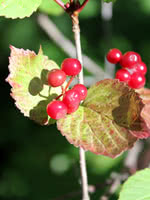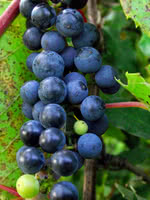Mon-Fri 9am - 5pm Mountain time
Lowbush Cranberry vs Riverbank Grape
Viburnum edule
Vitis riparia
NOT AVAILABLE THIS SEASON - MIGHT RETURN
CUSTOM GROW
Lowbush Cranberry is a short, deciduous shrub native to North America. Its white flowers bear sour but edible fruit that ripens to a brilliant red in fall. Lowbush Cranberry's small size makes it suitable for urban use; buyers will also find it useful if trying to reclaim land back to its original species or when landscaping with native species in damp conditions.
The Riverbank Grape, also known as the Frost Grape, or Wild Grape, is a cold-hardy variety that produces fragrant white flowers in the spring and then tart, purple grapes late in the summer.
The Riverbank Grape is a vigorous grower that attracts lots of wildlife, who enjoy the fruit and flowers. This plant is native to North America, and is also highly resistant to fungal diseases, making this a great addition to your city gardens. This plant does best with a trellis.
Note: We do not ship grape vines to BC due to regulatory restrictions from the Canadian Food Inspection Agency.

